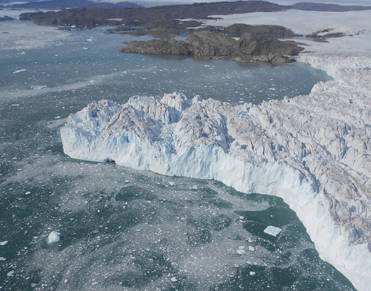Study on Greenland Ice: Key Facts
The study of Technical University of Denmark (DTU) Space Lab published in the US journal Proceedings of the National Academy of Sciences on changes to Greenland’s ice sheet lists the following findings:
- Greenland’s melting ice caused sea levels to rise and resulted in the disappearance of glaciers four times faster in 2013 than in 2003 and is noticeable across the Arctic island.
- 111 cubic kilometres of ice disappeared per year in 2003 whereas 10 years later this figure had almost quadrupled to 428 cubic kilometres.
- Most of Greenland’s ice melt was observed on the ice cap, predominantly on the glaciers in the island’s northwest and southeast till 2003. But from 2003 to 2013 most of the ice loss was from Greenland’s southwest region, which is largely devoid of large glaciers.
- The ice is now melting from the surface mass and melting inland from the coastline. As a result, growing rivers of water are streaming into the ocean.
- The melting ice is attributed to rising land temperatures and in part to the fact that the ice comes into contact with waters that are increasingly warmer.
- As the atmosphere’s temperature gradually rises there would be an acceleration in the ice melt.
The study notes that while the amount of sea level increase varies from region to region, there was a worldwide increase by of average of 20 centimetres (about eight inches) in the 20th century and the sea level is currently rising by about 3.3 millimetres per year.
Month: Current Affairs - January, 2019


